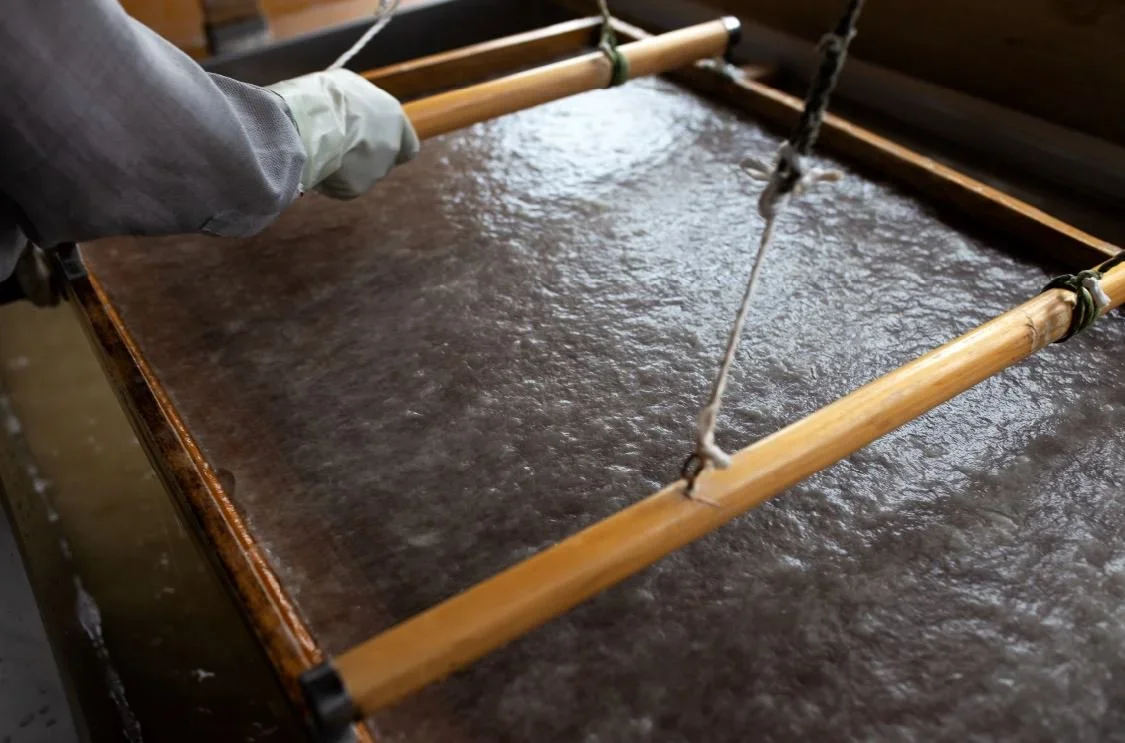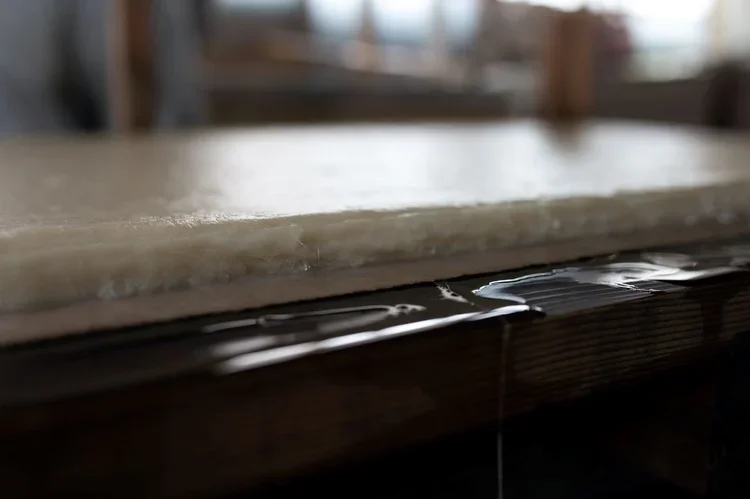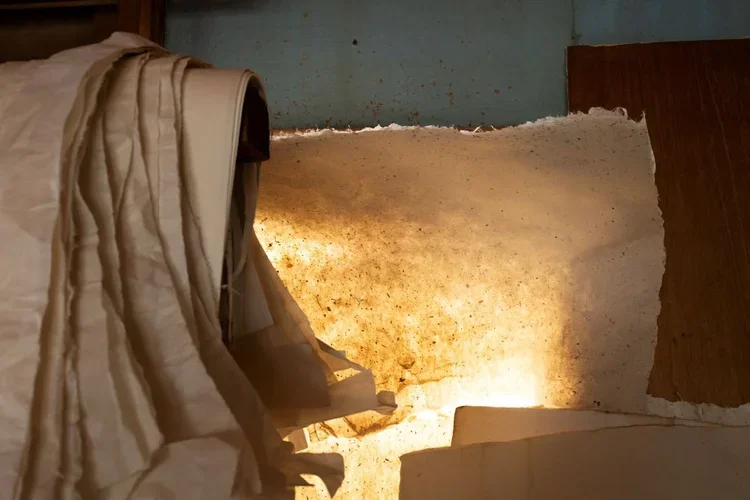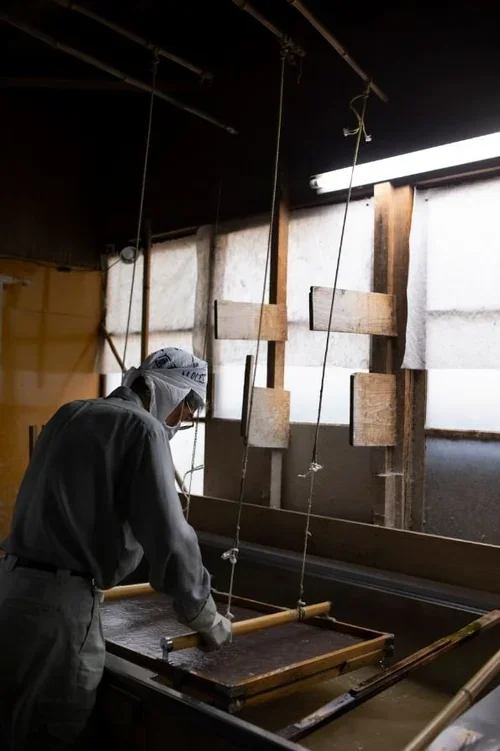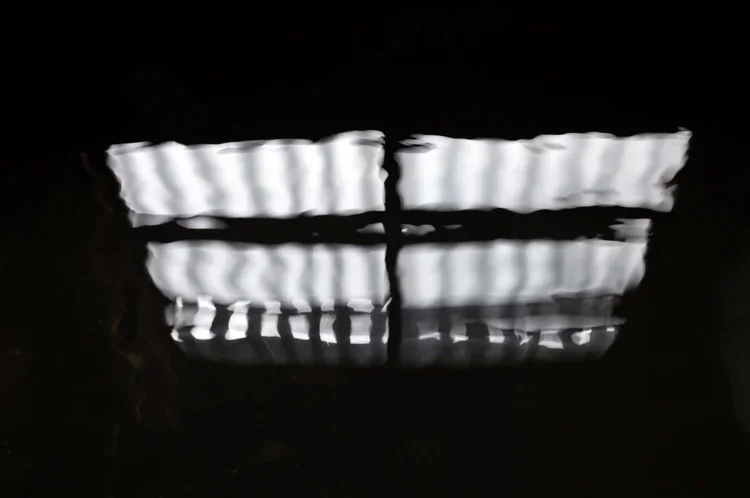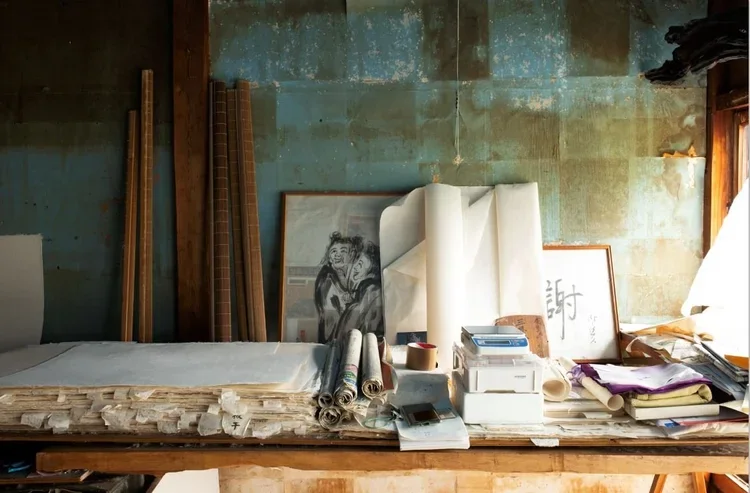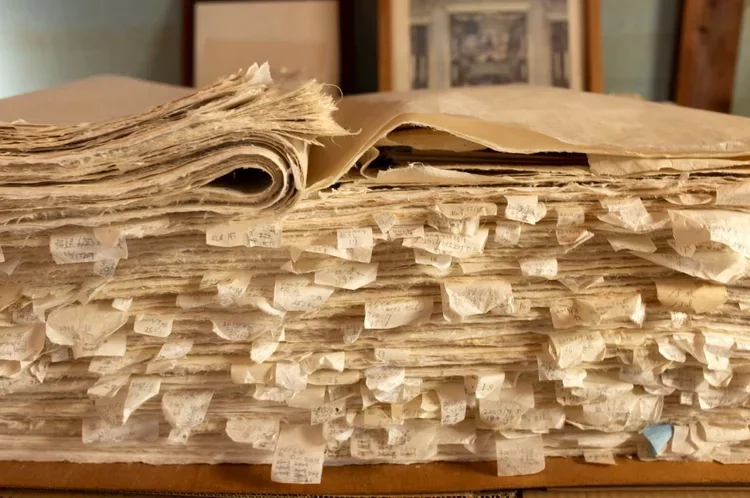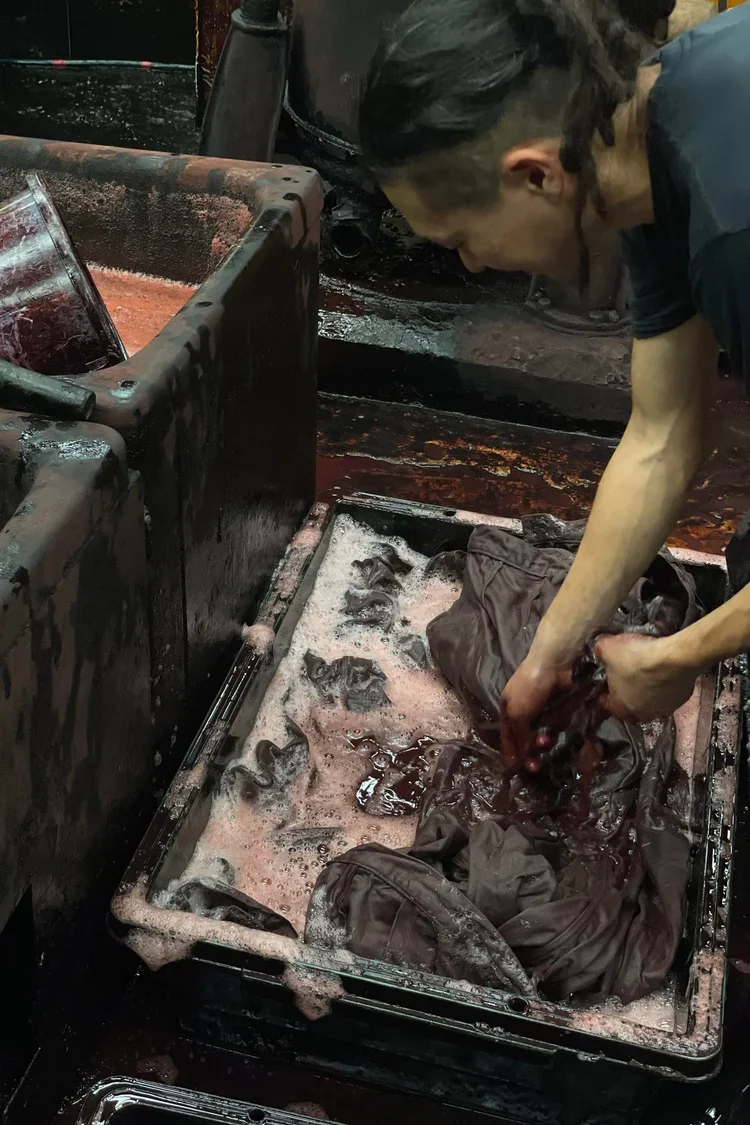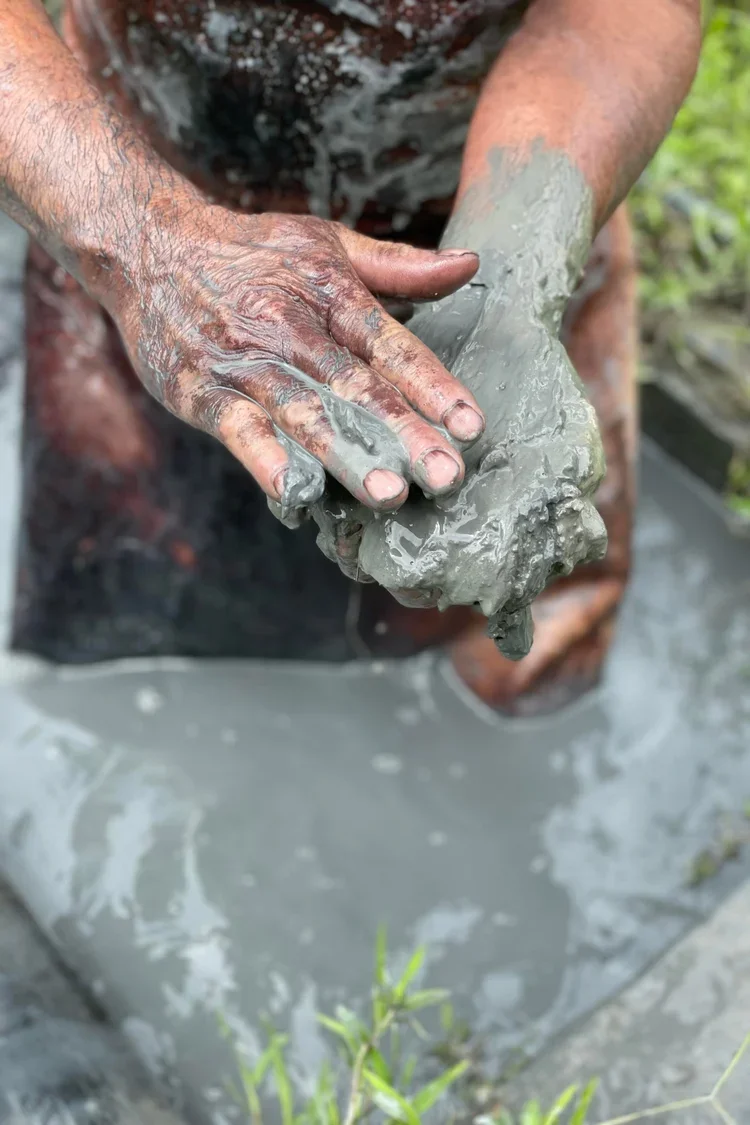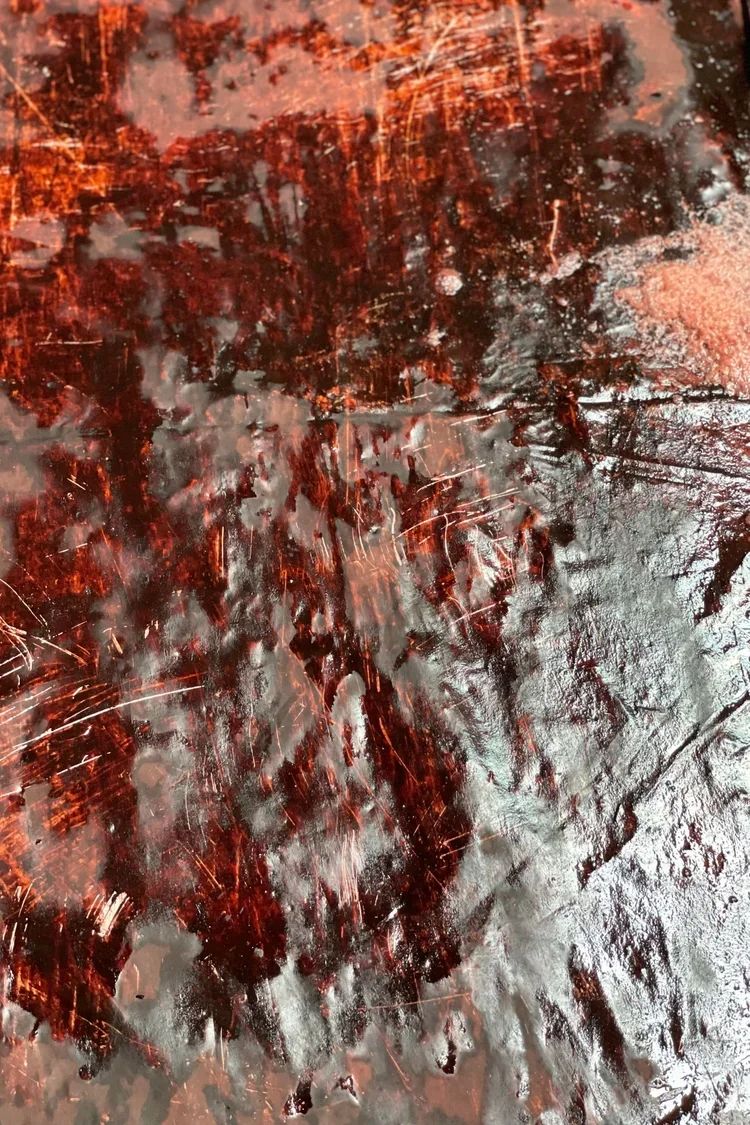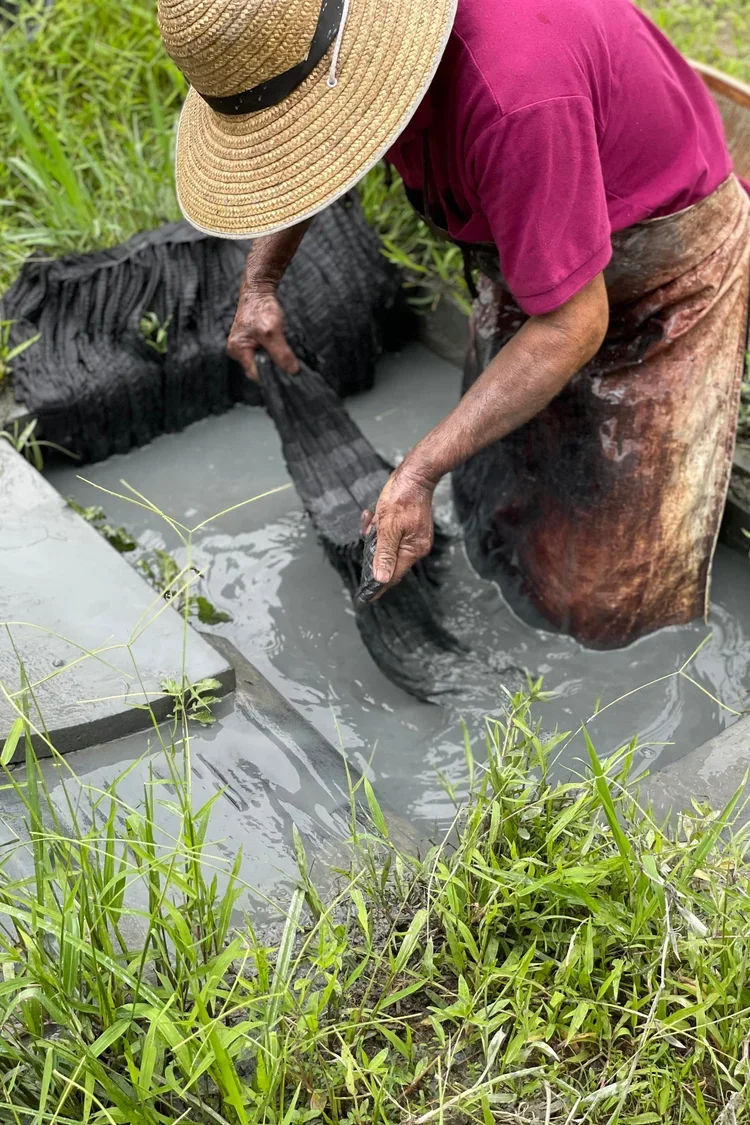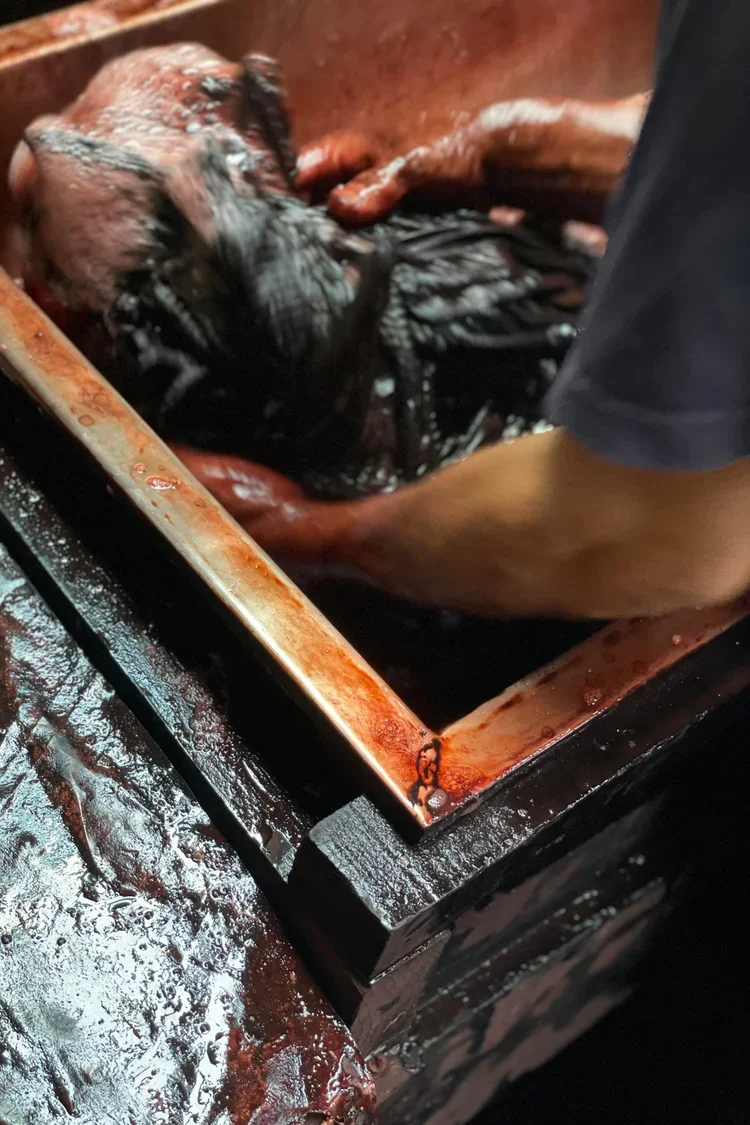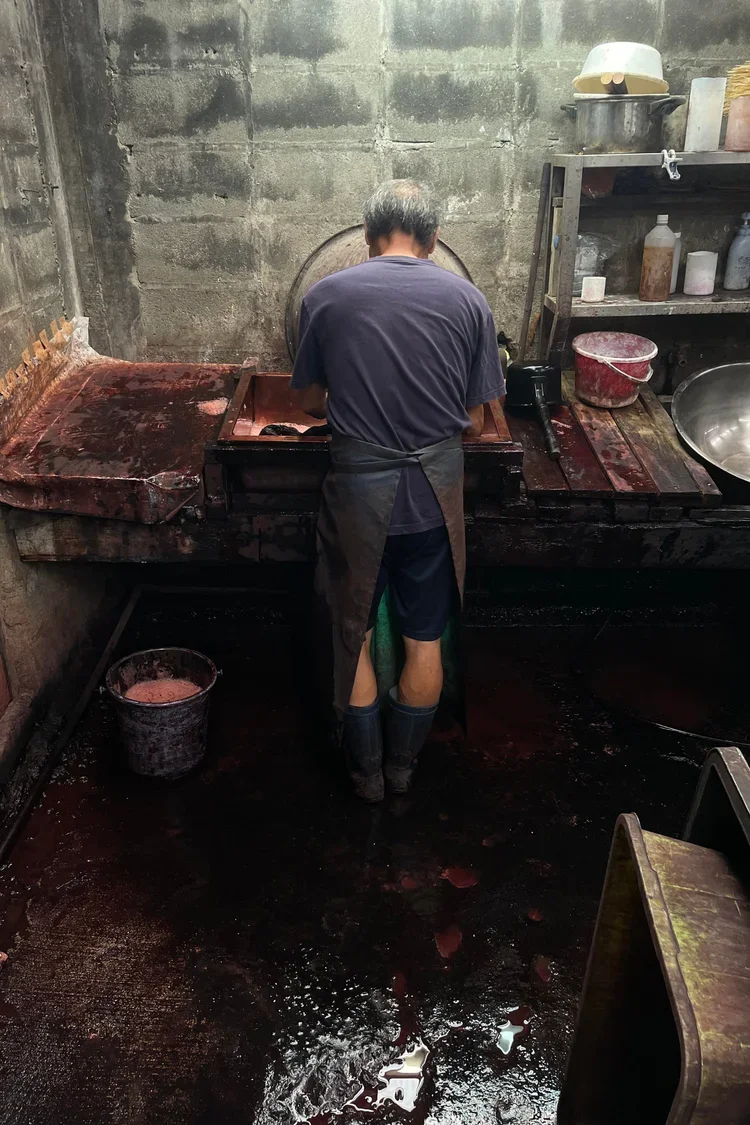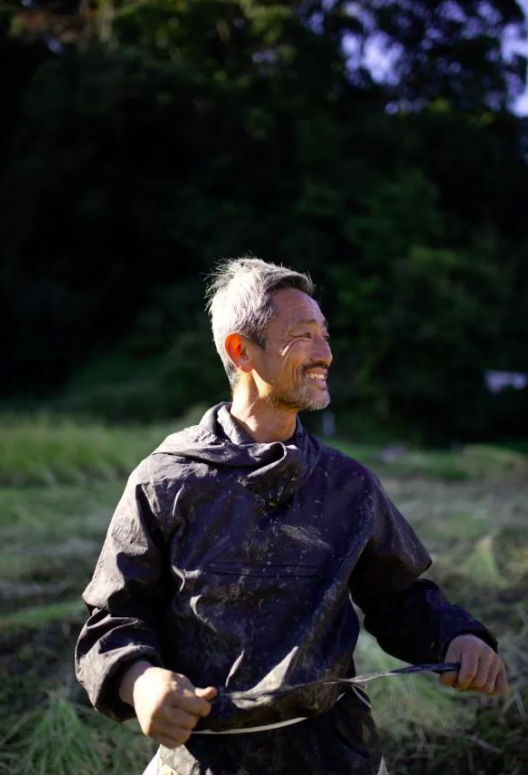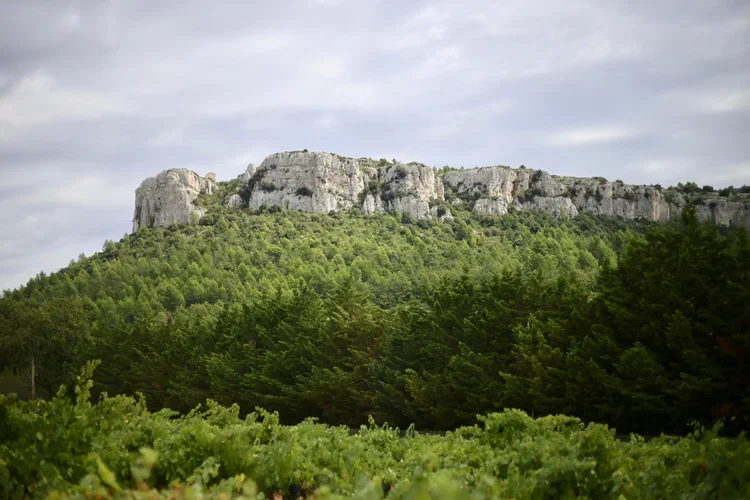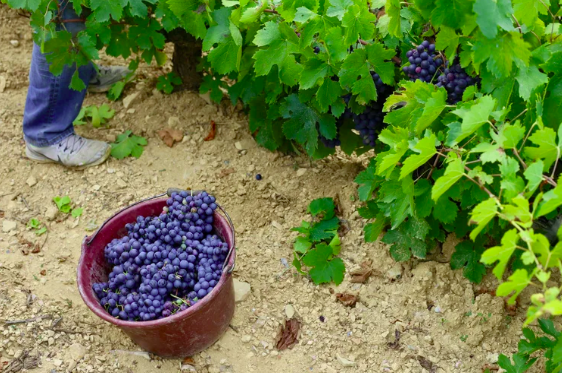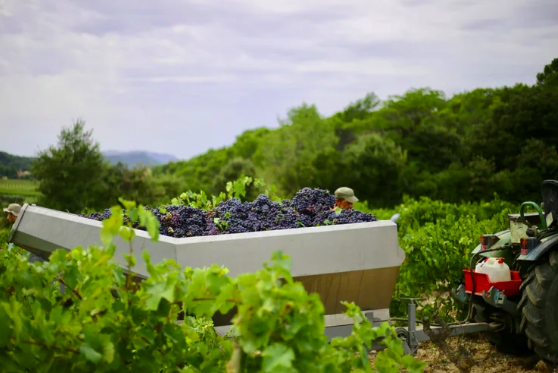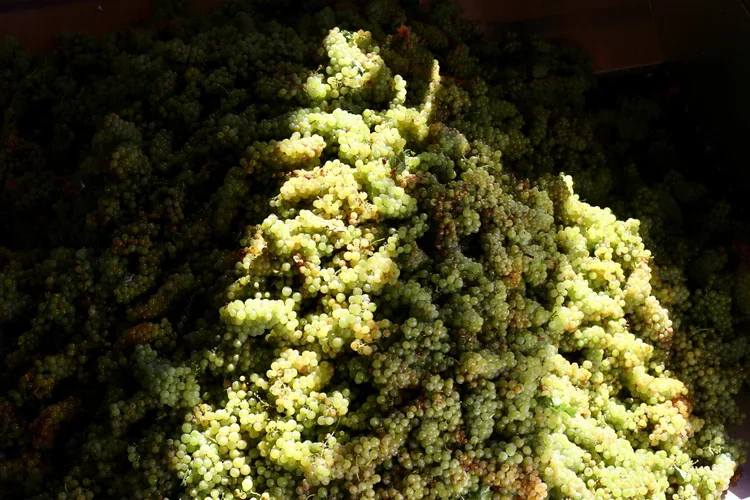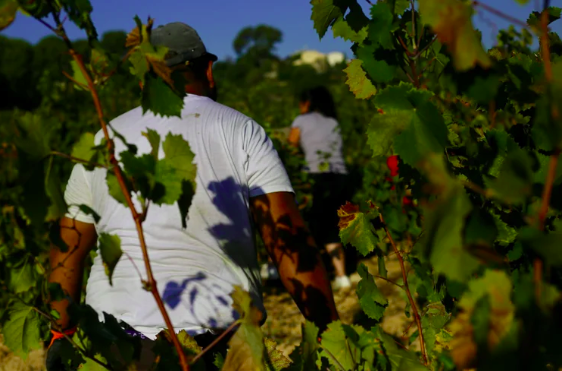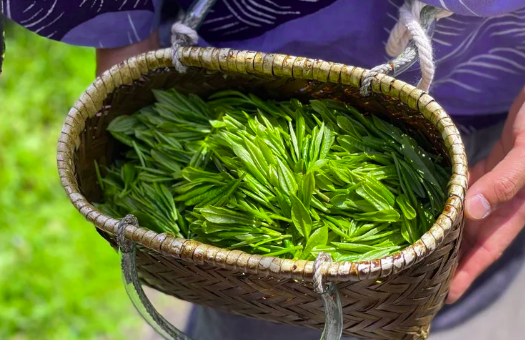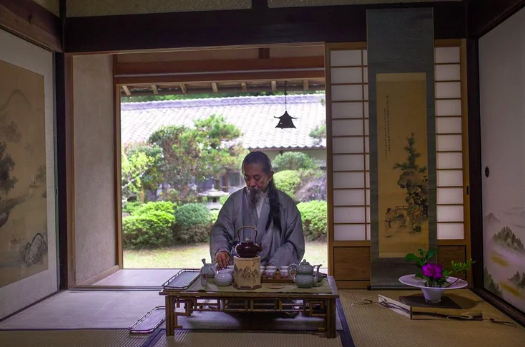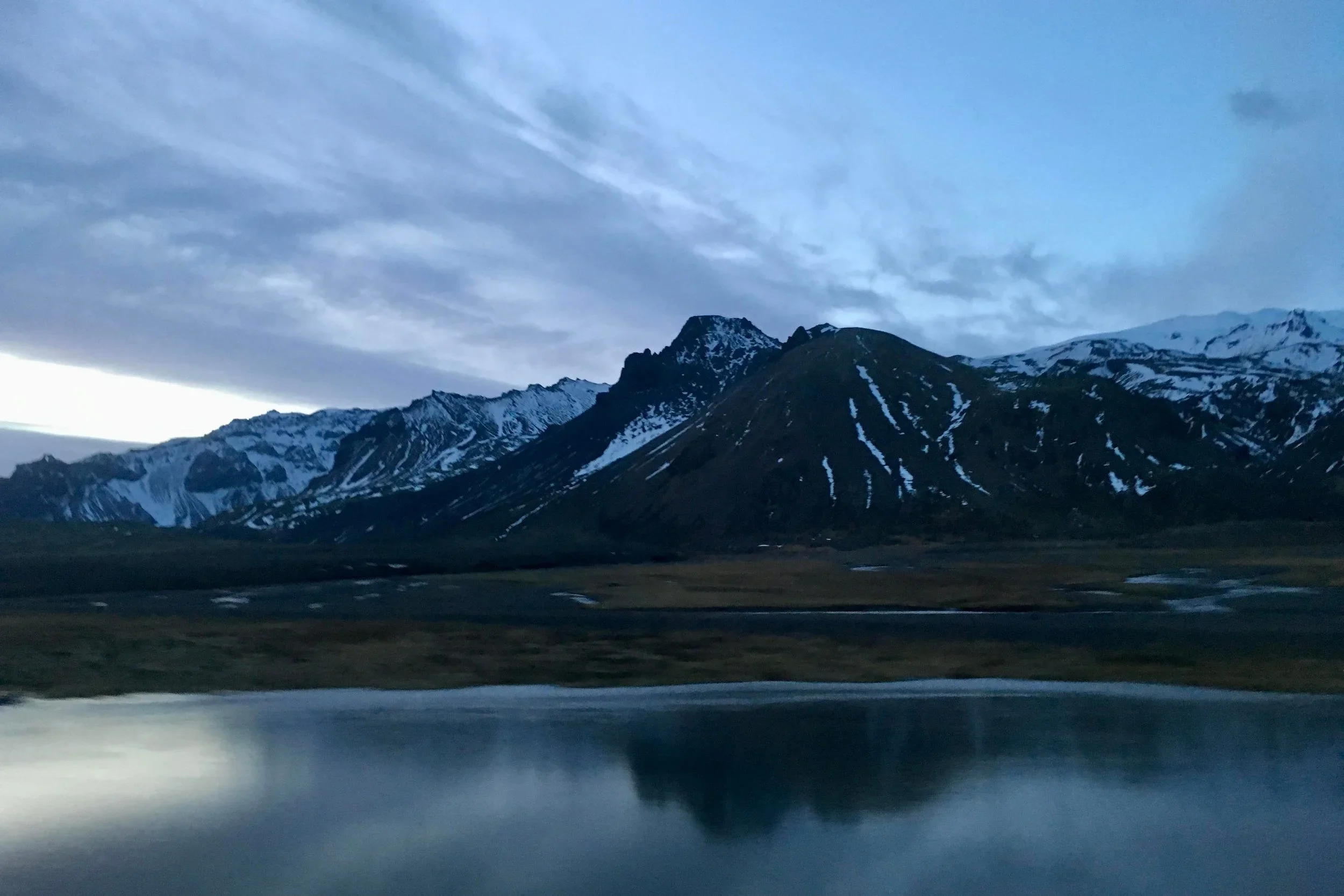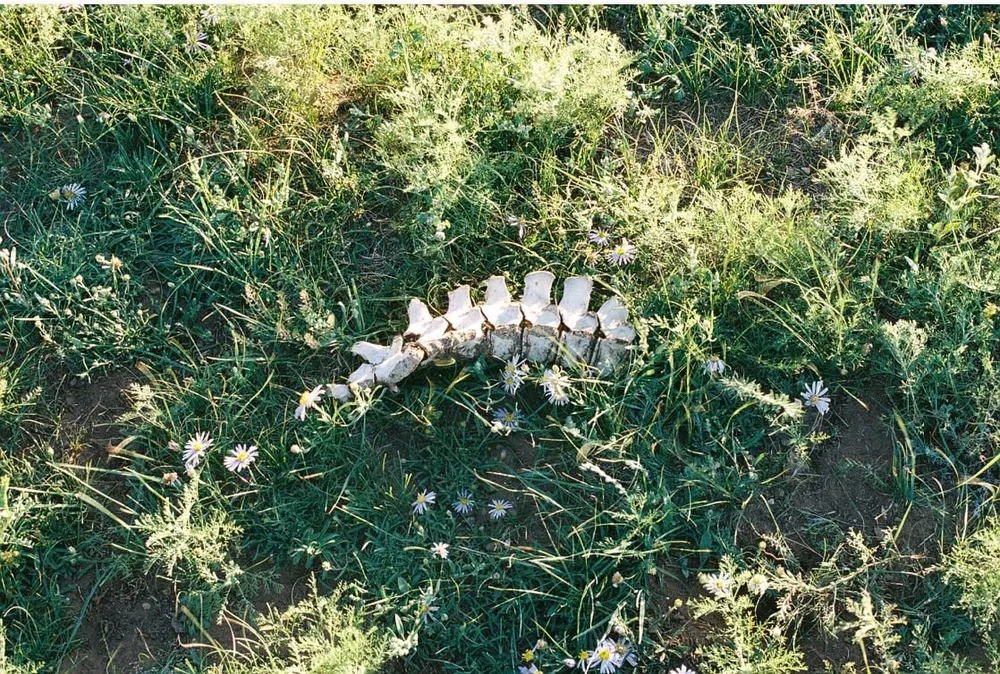GOKAYAMA, in the atelier of washi master Kenzo Miyamoto
The village of Gokayama in Toyama prefecture is famous for its steep thatch-roofed houses known as gassho-tsukuri. In this historical village they have been making a type of Etchu paper for more than 1200 years using methods passed down through the generations. From the preparation of the paper mulberry (kouzo) fibers to the molding of each sheet of paper, they have kept their ancient techniques, producing superior quality Japanese paper known as Yukyu washi.
富山県五箇山は、合掌造りで知られる茅葺屋根で有名な村である。この歴史的な村で、彼らは世代を超えて受け継がれてきた方法を使って、1200年以上もの間、越中和紙を作り続けて来た。楮繊維の和紙の製造から、一枚一枚の和紙の成形まで、先祖からの技術を守り続けて、悠久和紙として知られる高品質の和紙を生み出している。
DOROZOME, Amami
Dorozome is a 1300-year old mud dyeing technique from Amami-Oshima, an island in the Ryūkyū archipelago, southern Japan. It involves dying textiles with the essence of Yeddo hawthorn (called Techi tree in Amami dialect) which originally grows inside the island, and soaking them in the muddy rice field after. The key of Dorozome is this chemical reaction between irons contained in the mud of Amami-Oshima and the tannin pigments of Techi tree. Kanai Kougei is a company based on the island specialized in this technique giving a unique black colour to textiles. Traditionnaly dorozome is used to dye the yarn of a kimono cloth called “oshima tsumugi”.
泥染めとは、日本の南、琉球列島にある島、奄美大島で1300年の歴史を持つ泥染め技法のことである。奄美大島に自生するヤエヤマサンザシ(奄美の方言でテチの木)のエキスで布を染め、泥のついた田んぼに浸しておくというものだ。奄美大島の泥に含まれる鉄分と、テチの木のタンニン色素が化学反応を起こすのが、泥染めのカギとなる。金井工芸はこの技術を専門とする会社で、織物を独特の黒に染めることができる。「大島紬」と呼ばれる着物の糸を染めるのに、伝統的に泥染めが使われている。
INEKARI, Chiba
JAPANESE COOKING UTENSILS
WINE HARVEST, Cassis, France
TEA FARM, Nara
